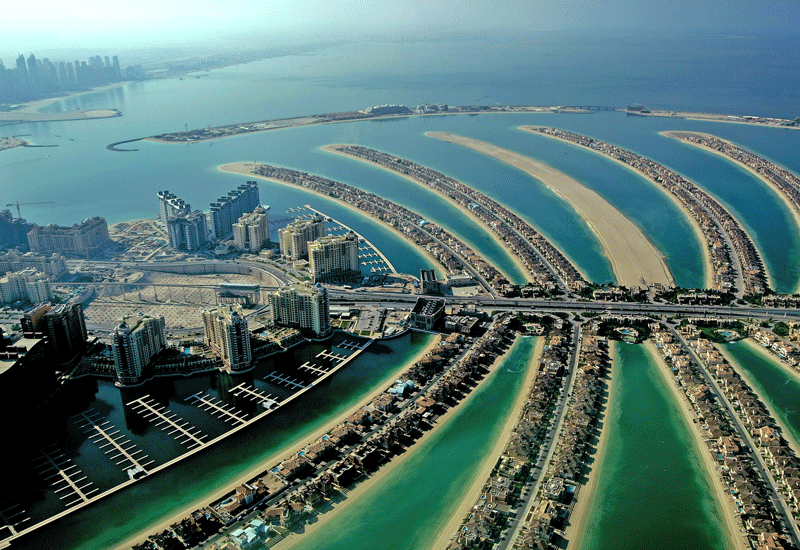
Palm Jumeirah
Construction of Palm Jumeirah began in August 2001, and is considered one of the world's biggest undertakings. Unlike other previously man-made islands that are built from metal and concrete, Dubai's Palm Islands are made from all natural materials - rock and sand upon Prince Sheikh Mohammed Bin Rashid Al Maktoum's request. Although Palm Islands are artificial islands, the prince desired for a natural appearance that would blend into existing surroundings. Basically, he is asking to build a massive structure without concrete and steel to hold it in place. It is exactly this demanding feature that makes constructing these islands the biggest challenge. Plans for this megastructure project would not have been able to materialize without the collaboration between construction contractors and engineering scientists.

Costruction
Scientists calculated that for breakwater crescent to be functional along the 5 km radius of Palm Jumeirah, it had to be at least 3 m above waves, 11.5 km long and 200 m wide in cross section. The company that constructed the breakwater crescent was Archirodon Overseas. This project required 9 barges, 15 tugboats, 7 dredgers, 30 heavy land-based machines, and 10 floating cranes. The islands themselves would be made out of an obscene amount of sand dredged from three massive barren sea beds nearby (from the gulf), while the breakwater crescent out of rock and sand, though mostly rock.

The rocks were piled on barges and instantly shipped to the construction site in less than 24 hours. Then, a floating conveyor belt operating all day and night, discharged the 40,000 tons of rock per day to the breakwater crescent. The other miracle is how this stone wall is expected to stay in place without concrete to secure it. Scientists claim that rocks were selected by size and weight and specially positioned by cranes. As easy way to think of this is how a key fits in a keyhole. The rocks work the same way - each rock must "interlock" with the adjacent one to tackle forces of the sea. However for safety precautions, scientists perform frequent checks to make sure the rocks in the breakwater are not drifting away. For this reason, scientists send divers undersea to survey the ocean floor, every 27 m, looking for cracks and splinters in rocks or "rock fatigue" caused by strong waves. The last thing they want is for the breakwater to disintegrate because that could be fatal to the existence of the islands.

The breakwater crescent of Palm Jumeirah is about 11 km long and 200 m wide in cross section. It stands over 13 feet above low tide sea level and sits in 34 feet of water at the deepest point. The crest of the breakwater is 3-4m above mean sea level. The seaward slope is one in two. The composition of the breakwater consists of coarse sand, quarry run, and 5-6 tonnes of sand. The seaside breakwater is protected by rubble mound armor. The lowest layer of the breakwater is filled with sand. Rocks weighing one ton were placed on top of the sand followed by two more layers of rocks. In addition, there are two 328-foot openings on each side of the breakwater to enhance water circulation. . The fact that the latter estimate was derived during the construction period can explain the different results. Water circulation around the fronds and open sea is critical for marine life, supply of oxygen and the removal of pollution. Furthermore, there is a retaining wall between the Crescent and fronds. Another layer of rock is placed in front of the wall to reduce overtopping quantity.



